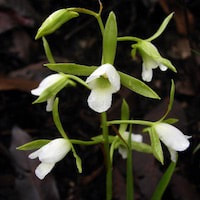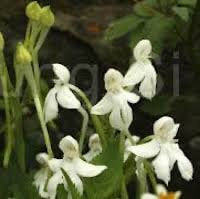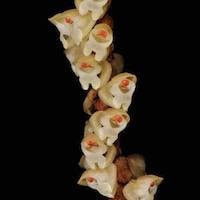MFR7- Men's Fresh 7 - Full-thyme job
|
Native Singaporean Orchid notes: Lycaste Deppei
Lycaste Deppei is a captivating orchid found in humid forests, thriving on trees and rocks. It prefers colder to warmer climates and grows small to medium-sized. The plant has deciduous leaves that are pointy and leave sharp spines when they fall. Its fragrant flowers bloom in spring, growing upright in clusters. The orchid's scent, reminiscent of peppermint or eucalyptus to some, varies among individuals, with some smelling root-beer or antiseptic notes. This diverse aroma makes it a unique addition to Scentopia's Orchid Fragrance, enriching its appeal.
|
Therapeutic Orchid notes:
|
Eulophia herbacea Lindl.
Known as Wan Mangmum in Thai, this orchid is found in lowland areas spanning Indochina, Thailand, Bangladesh, and India. Its tubers, known as "salep misri," are used in Indian markets for their tonic qualities and to purify the blood. In Thai traditional medicine, the orchid's pseudobulbs are employed to treat insect bites. These uses reflect its role in promoting health by purifying the blood and addressing conditions attributed to blood impurities, along with offering relief from insect stings. |
|
Habenaria longicorniculata J Graham Syn. Habenaria longecalcarata A. Rich.
Known as Devasunda in India, Kozhikilangu in Tamil, and Oze-no-sawa-tombo in Japanese, this orchid blooms from July to September in the Western Ghats and August to November in Tamil Nadu, thriving at elevations between 800 to 1900 meters. In traditional herbal practices, it is used by Natti Vaidyas to treat scrotal enlargement by consuming fresh tubers and applying a paste made from crushed tubers and turmeric to alleviate leukoderma. These uses underscore its valued role in traditional medicine across different cultures. |
|
Pholidota pallida Lindl.
The orchid Eumaishixiantao is found across Nepal, Bhutan, northeast India, and parts of China, Myanmar, Thailand, Laos, and Vietnam, thriving in forests at altitudes from 500 to 2700 meters. In traditional medicine, its root and pseudobulb are used to make a paste that reduces fever, while the powder induces sleep and eases abdominal pain. The orchid's juice targets navel-centered abdominal discomfort. These practices highlight its potential for treating specific symptoms, showcasing its importance in traditional herbal medicine. |
Other scent note
Scentopia Library Reference ingredient
Celery - Check details at Scentopia's scent library
Download the guided mediation that works best with this Orchid fragrance oil
| men_fresh_essential_oil_orchi_00007.mp3 | |
| File Size: | 120923 kb |
| File Type: | mp3 |



